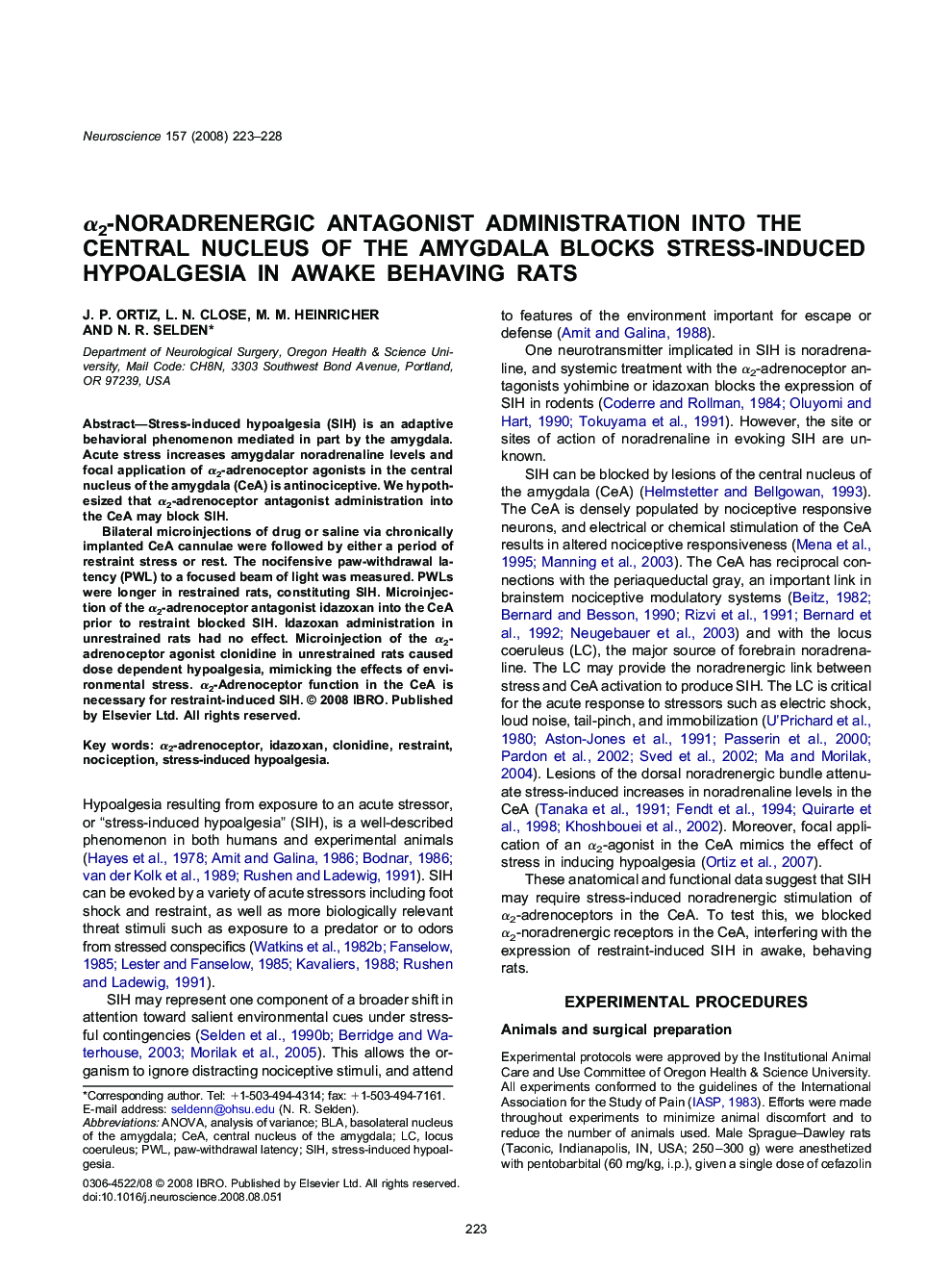| Article ID | Journal | Published Year | Pages | File Type |
|---|---|---|---|---|
| 4341160 | Neuroscience | 2008 | 6 Pages |
Stress-induced hypoalgesia (SIH) is an adaptive behavioral phenomenon mediated in part by the amygdala. Acute stress increases amygdalar noradrenaline levels and focal application of α2-adrenoceptor agonists in the central nucleus of the amygdala (CeA) is antinociceptive. We hypothesized that α2-adrenoceptor antagonist administration into the CeA may block SIH.Bilateral microinjections of drug or saline via chronically implanted CeA cannulae were followed by either a period of restraint stress or rest. The nocifensive paw-withdrawal latency (PWL) to a focused beam of light was measured. PWLs were longer in restrained rats, constituting SIH. Microinjection of the α2-adrenoceptor antagonist idazoxan into the CeA prior to restraint blocked SIH. Idazoxan administration in unrestrained rats had no effect. Microinjection of the α2-adrenoceptor agonist clonidine in unrestrained rats caused dose dependent hypoalgesia, mimicking the effects of environmental stress. α2-Adrenoceptor function in the CeA is necessary for restraint-induced SIH.
